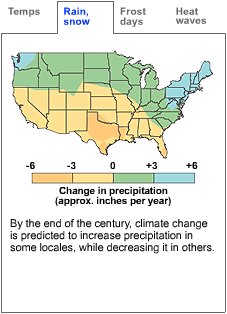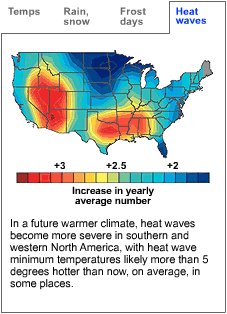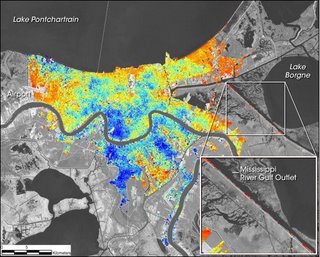That's what Adam Farrington had to say to Mayor Ray Nagin in a letter to the editor published in this week's Gambit Weekly. Farrington criticized Nagin for failing to show up to speak about the value of the arts community at the annual Mayor's Arts Awards.
Farrinton continued:
My sense of being represented dissipated, and I turned my attention other directions. So we've got four more years of a mayor who has been failing to inspire me.
True, Ray Ray has a lot on his plate to worry about right now, but if he were worrying, no one would know, because
he has absolutely no communication whatsoever with the citizens of New Orleans!I'm beginning to think that the much celebrated "get off your asses" moment on WWL a couple of days after Hurricane Katrina was as much a function of the failure of the federal government to do anything as it was Ray Ray's failure to communicate needs and directives before disaster occurred.
Here we are, almost three weeks into a new hurricane season, and 10 months after Hurricane Katrina, yet does anyone know what the plan is to rebuild one of the most uniquely-cultured cities in the world?
What about the report that two-thirds of the water pumped by the Sewerage and Water Board ends up leaking out of pipes before it gets to people's homes? Does the mayor have a plan to address the expensive task of fixing the flood-damaged sewerage infrastructure that doesn't require the use of "the 'b' word" (bankruptcy)?
What about the
bloody murder of five teenagers in Central City on Saturday? Is this a good thing or a bad thing for New Orleans' prospects? Does the mayor care at all that these lives were lost? Were they just gangbangers who got what they deserved? Do these kinds of killings adversely affect the image of the city and the willingness of residents and proponents to invest?
It seems these questions haven't occurred to the mayor, but city councilman Oliver Thomas gets it -- he's holding a press conference on the matter. It would seem to me that the mayor wouldn't want to be upstaged in this way, but that would assume the mayor is competent.
What about the recent legislative conquests led by Governor Blanco and passed by the Louisiana House and Senate to consolidate the assessors, criminal and civil sheriffs and courts, including the offices of register of conveyances, recorder of mortgages, and custodian of notarial archives? Has the mayor anything to say about these Cat 5 changes coming over the horizon? In particular, since assessor consolidation will require a citizen vote, wouldn't it be nice to know where the mayor stands on the issue?
What about the cuts to the Regional Transit Authority? Can New Orleans do without a public transportation system?
What about the charter school movement in New Orleans? It seems like a good idea, and the U.S. Department of Education recently gave Louisiana a $23.9 million grant to create new charter schools, most of it for the New Orleans area. Recall, however, that the public school system was $40 million in arrears before Hurricane Katrina -- another topic that the mayor failed to come up with a plan to address.
What about the
HUD plan to demolish four public housing developments? I have mixed feelings about the housing developments, but does the mayor? How would we know? He hasn't said a word about it. Is it a good plan? Are all public housing residents, as Oliver Thomas suggested, lazy people who watch soap operas all day, or are some of them hard-working people trapped by poverty wages and crime? How do we save the good ones without rewarding the bad ones? Will moving people into mixed-income neighborhoods affect their prospects if they can't earn more? As a matter of social justice, or even constitutional rights, does it matter that, as I heard on Saturday's
Community Gumbo, the animals were brought back to the Audubon Zoo before people were brought back to public housing?
The only things that's being cut are the things that affects poor people. The Aquarium came back. I say it over and over again. We brought back the fish. We didn't bring back the people. We rolled out a red carpet for the penguins to come back in the city. We opened up the zoo for the animals. Certain things are not as important as human lives, but it depends on what's important to a certain class of people.
What about the neighborhood planning process that was spurred on by the mayor's Bring New Orleans Back commission? How does the mayor intend to include neighborhoods in the decision-making process when independent neighborhood planners are being told that
their input isn't needed (i.e., when the Lambert Group hired by the City Council to come up with a plan isn't remunerated for autonomous planning efforts)?
What happened when Ray Ray disappeared behind closed doors with former opponents Rob Couhig and Virginia Boulet the Monday after he was re-elected? Did he emerge with a plan? I don't recall. If he did, why don't we know what it is? Is it because even when the mayor has a plan, there's no follow through?
Citizens are left to duke it out for their own survival while the mayor continues his amazing disappearing act. I'm about to say it's time for him to try a new act -- maybe one where he attempts to hold his breath in the Mississippi River eddies for ten minutes -- oops, I said it.
The point is, we need leadership. We'd do just as well, or just as poorly, without the mayor we have now, because he has nothing to say. What exactly Ray Ray does with his time is a mystery to all of us who are waiting for direction.
Tags:
Hurricane Katrina |
Katrina |
New Orleans |
Louisiana |
We Are Not OK |
Nagin |
Ray Nagin |
Oliver Thomas |
Rebuild New Orleans |
Charrette |
Bring New Orleans Back commission |
New Orleans finances |
New Orleans crime |
New Orleans public housing






















